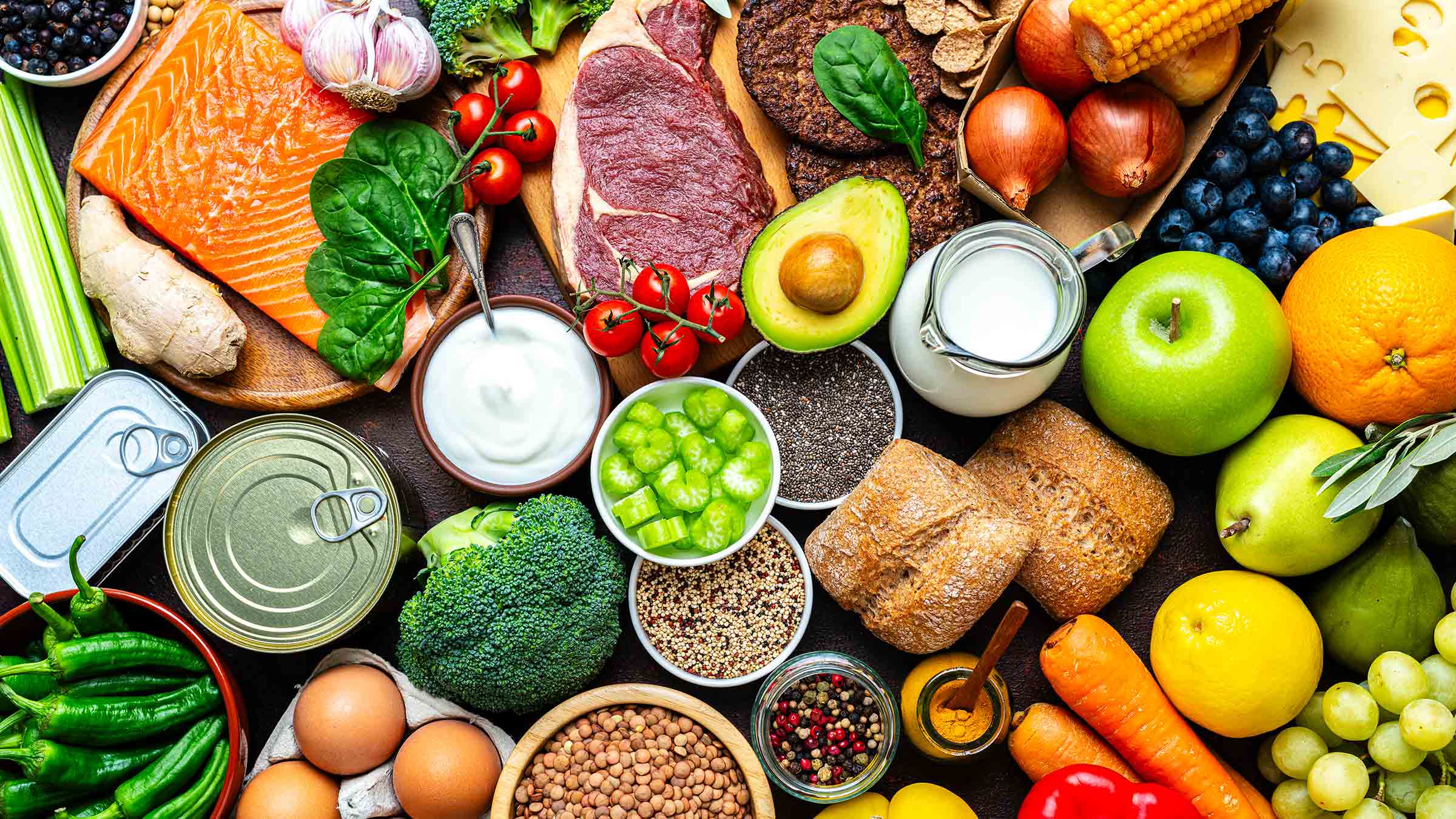
At some point in your life, you’ve probably been asked, “Coke or Pepsi?” Most people lean strongly one way or the other, with just a few falling in the middle.
What about diet or regular? With increased awareness of caloric intake throughout the United States, many have shifted their attention to liquid calories. Is it helpful or hurtful to skip those extra calories by switching from regular to diet soda?
What’s the difference between diet and regular soda?
Regular soda is generally a mixture of carbonated water and sweeteners, like high fructose corn syrup or sucrose; phosphoric acid (if it’s a dark cola) “natural flavors”; and caffeine.
Diet soda will contain similar ingredients to its regular counterparts, with the primary exception being that they contain sugar substitutes. Common sugar substitutes used in diet soda include aspartame, acesulfame potassium, sucralose and stevia. Most sugar substitutes are considered “non-nutritive,” meaning they offer little to no energy when consumed.
Reduced-calorie soda is sort of an in-between option, which typically uses a combination of sucrose and a sugar substitute (commonly stevia), in an effort to save on calories from regular sweeteners.
What are the benefits of drinking diet soda?
Most health care practitioners wouldn’t automatically recommend drinking diet sodas. However, if someone consumes regular soda on a consistent basis and isn’t ready or willing to quit altogether, there can be some benefits to consuming diet soda as opposed to regular.
Benefits of diet soda:
- Calorie reduction — It can assist with weight loss
- Decreasing the amount of sugar in your diet — One 12-ounce can of regular soda contains 10 to 11 teaspoons of sugar. The American Heart Association recommends no more than six and a half teaspoons of added sugar for women and 10 teaspoons for men per day.
- Improved blood sugar control — One 12-ounce can of regular soda typically contains 40 to 50 grams of carbohydrates, which is within the recommended carbohydrate intake range for an entire meal when consuming an 1,800-calorie diet.
What are some risks with drinking diet soda?
Aspartame
Alarmist headlines have dominated the media landscape since the World Health Organization (WHO) released its updated guidelines in May 2023 recommending against the use of NNS (non-nutritive sweeteners) to control body weight or reduce the risk of noncommunicable diseases. And if that weren’t enough, the recent classification of aspartame as a group 2B agent by the IARC (International Agency for Research on Cancer) only served to stoke the flames further.
For reference, the IARC defines group 2B agents as being “possibly carcinogenic to humans.” Aspartame is a NNS containing about 200 times the sweetness compared to table sugar and is one of the most commonly used NNS in diet soda. In response, the U.S. Food and Drug Administration (FDA) released the following statement regarding the IARC’s classification: “Aspartame being labeled by IARC as ‘possibly carcinogenic to humans’ does not mean that aspartame is actually linked to cancer,” and the FDA remains steadfast in its stance on the safety of aspartame use under the current acceptable daily intake (ADI), which is remains at 50 mg per kilogram of body weight per day.
A similar statement was released by Food Insight (the information hub from food safety experts at the International Food Information Council or IFIC), stating, “IARC does not engage in risk assessments, so the IARC classifications do not mean that consuming a food containing those compounds will cause cancer in humans.”
While the IARC’s classification may sound scary, it is important to keep things in perspective. For starters, the IARC is not a food safety agency. Instead, it is an intergovernmental branch of the WHO. Further, you may be wondering what else one might find in the IARC’s list of agents classified as group 2B. A few examples include kava extract, aloe vera, (whole leaf extract) goldenseal root powder, traditional Asian pickled vegetables, caffeic acid (found in mint, wine and coffee) and gingko biloba extract.
And what about that ADI for aspartame established by the FDA? In terms of the average diet soda, the ADI equates to about 21 cans per day for an adult weighing approximately 180 pounds. So, while there are recommended limitations to its use, aspartame consumption according to the FDA is likely safe for those consuming far less than the established ADI.
Sucralose
Aspartame hasn’t been the only NNS facing scrutiny in the media. A recent study conducted in 2023 reported finding DNA damage occurring from the use of sucralose, a NNS with 600 times the sweetness compared to table sugar and sold under brand name Splenda. However, what the headlines often leave out is that the study didn’t reveal DNA damage from actual sucralose. Instead, researchers concluded damage to DNA resulted from the use of sucralose-6-acetate, a compound formed in trace amounts after sucralose is consumed and metabolized.
Additionally, the study was conducted in vitro (outside the body) as opposed to in vivo (in the body), which would give us a better understanding of how sucralose or any metabolites affect our health. In this study, researchers used cells of human origin and directly exposed them to both sucralose and sucralose-6-acetate in various concentrations. The study did conclude that “exposure of human intestinal epithelium to sucralose-6-acetate as well as sucralose itself damaged tight junctions and impaired intestinal barrier function at mM concentrations.”
However, it is also important to note the direct exposure to intestinal cells occurred in the absence of intestinal bacteria, which does not perfectly replicate exposure to either compound in the body. This also further emphasizes the need for future research to include human subjects to determine if any damage occurs from either compound that the body is unable to repair.
According to a statement found on the FDA’s website, “To determine the safety of sucralose, the FDA reviewed more than 110 studies designed to identify possible toxic effects, including studies on the reproductive and nervous systems, carcinogenicity, and metabolism. The FDA also reviewed human clinical trials to address metabolism and effects on patients with diabetes.”
So how much sucralose does the FDA deem safe for use? The FDA states the ADI for sucralose is 5 milligrams per kilogram of body weight per day. In terms of packets, this equates to 31 packets of sucralose per day for an individual weighing 180 pounds. Trying to equate the ADI in terms of equivalence to cans of diet soda is difficult, as a quick search on the website for one of the most well-known brands of diet soda (which offers a version of its diet soda with sucralose) shows sucralose listed as one of its ingredients but fails to provide the overall quantity. There are sucralose values for this product and others floating around the internet, but none appear to have been sourced directly from the manufacturer.
What to keep in mind
Although plenty of evidence still supports the safety of sugar substitutes used in diet soda, there are some considerations to keep in mind when consuming diet soda on a consistent basis:
- Diet sodas contain little to no calories and offer essentially no benefit from a nutritional standpoint: The concern here is with the potential of missing out on opportunities to consume something else, such as low-fat milk (source of calcium) or unsweetened green tea (source of micronutrients that may offer anti-inflammatory benefits).
- Perception that drinking diet soda will enable more indulgent choices: Some people who drink diet soda seem to be under the impression the calories saved enables them to order higher-calorie menu items, which may lead to an overconsumption of calories; this can stall weight loss and lead to weight gain.
- Weight and nutrition issues in children: Kids who drink diet soda could be at risk for becoming underweight from filling up on these non-caloric drinks and missing out on key nutrients for growth and development they would otherwise receive from drinking dairy and other sources of calcium and protein.
Which soda should you choose to drink?
The choice between regular or diet soda depends on several factors: taste preference, frequency of consumption, current body weight, dietary habits and intakes of other sugar-containing foods, just to name a few. Regardless of which you choose, just remember that weight loss and/or maintaining a healthy weight often comes down to calories. If you consume more calories than your body needs, you’ll eventually gain weight, whether they come from regular soda or by combining poor choices when using diet soda in an effort “save calories.”
If you’re looking to decrease or eliminate soda intake, but still crave something “bubbly,” try flavored sparkling water without added NNS. Other alternatives include trendy products, such as lower-sugar varieties of Kombucha, a fermented tea that contains probiotics, which may be helpful for gut bacteria or mixing small amounts of 100% juice with club soda.

Healthy eating is within your reach!
Make an appointment with our dietitians or nutritionists.
Schedule an appointment




